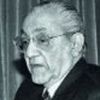Netas create false news; the Press is their victim
The order was withdrawn the very next day on the directions from PM Narendra Modi's office after outrage from the media and the public.

On April 2, India’s minister for information and broadcasting, Smriti Irani, announced measures to curb “fake news”. Based on a complaint of its dissemination, a journalist’s accreditation would be “suspended” pending the Press Council of India’s (PCI) “determination of the news item being fake or not”. The suspension would last six months for the first offence, a year for the second and permanently for the third.
The order was withdrawn the very next day — on the directions from Prime Minister Narendra Modi’s office — after outrage from the media and the public. But there was a calculated loophole in the withdrawal: namely that “the matter be addressed only by the (PCI)”. The government will be free to complain to it of “fake news”.
On April 4, it appointed a committee to “frame and suggest a regulatory framework for online media/news portals, including digital broadcasting and entertainment/infotainment sites and news/media aggregators”. Its mandate is to “delineate the sphere of online information dissemination which needs to be brought under regulation on the lines applicable to print and electronic media”.
Surely the norms applicable to the print and electronic media apply also to online media, websites and news portals. The fundamental right to freedom of speech and expression enshrined in Article 19(1)(a) of the Constitution of India, and its precise restrictions in Clause (2), apply to all without exception, including the print and electronic media, movies and online media. So does the criminal law.
Smriti Irani loftily declared on April 5 that while she was in favour of a policy that “upholds the right to free speech... at the same time does not give anyone the right to instigate a riot”. The ignorance is appalling. The Indian Penal Code will apply; no committee of babus is needed. The media was neither consulted, nor represented on the committee.
The concept of “fake news” is unknown to the law. This recent arrival belongs to the realm of dirty politics, not to the media. In the US, fake news was disseminated during the 2016 presidential elections. It is a tool in the hands of politicians, not journalists. On April 4, the chairman of the PCI, retired justice C.K. Prasad bravely tried to define fake news, only to reveal his incompetence and partiality. In a statement, he declared that fake news “means news, story, information, data and reports which is or are wholly or partly false”. This is itself false.
Decisions emphatically laid down by the Supreme Courts of the US and India make clear that the media cannot be punished for error, even if the report is found to be untrue or false. In the landmark the New York Times Co vs Sullivan case, there were grave factual inaccuracies in a protest ad paid for by a civil rights committee and published by the paper in 1960. The public safety commissioner of Montgomery, Alabama (the aforementioned Sullivan) sued for libel. The apex court ruled unanimously that “erroneous statement is inevitable in free debate” and freedoms of expression “must be protected if they are to have the ‘breathing space’” to survive.
It added: “A rule compelling the critic of official conduct to guarantee the truth of all his factual assertion — and to do so on pain of libel judgments virtually unlimited in amount — leads to... “self-censorship”... (U)nder such a rule, would-be critics of official conduct may be deterred from voicing their criticism, even though it is believed to be true and even though it is, in fact, true, because of doubt whether it can be proved in court or fear of the expense of having to do so... The rules thus dampen the vigour and limit the variety of public debate.”
In 1994, the Supreme Court of India approved of this. This is so even when a publication is based upon facts and statements which are not true, unless the official establishes that the publication was made with reckless disregard for truth or with malice.
“Fake news means” means “fabricated news” — it is a deliberate counterfeit. Peter Oborne’s The Rise of Political Lying quotes Tony Blair’s hatchet man Peter Mandelson: “(O)f course we want to use the media, but the media will be our tools, our servants; we are no longer content to let them be our persecutors.”
Politicians create false news; the press is their victim. When Narendra Modi alleged that Manmohan Singh, M.H. Ansari and others met at Mani Shankar Aiyar’s home over dinner to conspire against him, he was manufacturing “fake news”. Section 505 of the Penal Code penalises “statements conducing to public mischief” — that is fake news. The law is adequate.
As the Supreme Court of the US ruled in 1974: “A responsible press is an undoubtedly desirable goal, but press responsibility is not mandated by the Constitution, and like many other virtues it cannot be legislated.”
By arrangement with Dawn
